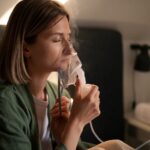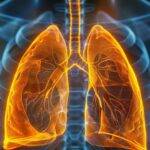Technology
Technologies used to detect Lung Diseases
There are several technologies used to detect lung diseases, ranging from simple diagnostic tools to complex imaging and laboratory tests. Here are some of the common technologies used for detecting lung diseases:
Spirometry: It is a simple and non-invasive test that measures the amount of air you can inhale and exhale from your lungs. It helps to diagnose conditions like asthma, COPD, and other lung diseases.
Chest X-ray: It is an imaging technique that uses electromagnetic waves to produce images of the chest. It can detect abnormalities in the lungs, such as fluid or masses, which may indicate lung disease.
Computed Tomography (CT) Scan: It is an imaging test that uses X-rays to produce detailed cross-sectional images of the chest. CT scans can provide more detailed information than chest X-rays and can detect abnormalities in the lungs, including early-stage lung cancer.
Magnetic Resonance Imaging (MRI): It is an imaging technique that uses strong magnetic fields and radio waves to produce detailed images of the chest. MRI can detect abnormalities in the lungs, such as lung nodules or masses.
Bronchoscopy: It is a procedure that uses a thin, flexible tube with a light and camera on the end to examine the airways and lungs. It can help diagnose conditions such as lung cancer, infections, or other abnormalities.
Biopsy: It is a procedure that involves removing a small sample of lung tissue for laboratory testing. It can help to diagnose lung cancer, infections, and other lung diseases.
In addition to these technologies, there are also advanced methods like Positron Emission Tomography (PET) scans and gene testing which can be used to detect lung diseases. Overall, the choice of technology depends on the specific lung disease being diagnosed and the individual patient’s needs.
Technologies used to detect Sleep Diseases
There are several technologies used to detect sleep disorders, ranging from simple diagnostic tools to more advanced technologies that provide detailed information about sleep patterns and brain activity during sleep. Here are some of the common technologies used for detecting sleep disorders:
Polysomnography (PSG): It is a comprehensive sleep study that measures brain waves, eye movement, muscle activity, heart rate, and breathing during sleep. PSG is used to diagnose sleep disorders such as sleep apnea, narcolepsy, and restless leg syndrome.
Home Sleep Apnea Testing (HSAT): It is a simplified version of PSG that can be done at home with a portable device that measures breathing patterns, oxygen levels, and heart rate during sleep. HSAT is typically used to diagnose sleep apnea.
Actigraphy: It is a non-invasive method that uses a small device worn on the wrist to measure movement and activity during sleep. Actigraphy is used to diagnose conditions such as insomnia and circadian rhythm disorders.
Multiple Sleep Latency Test (MSLT): It is a test that measures how quickly you fall asleep during the day. MSLT is used to diagnose conditions such as narcolepsy.
Electroencephalogram (EEG): It is a test that measures brain activity by recording electrical signals from the scalp. EEG is used to diagnose conditions such as epilepsy and sleep-related movement disorders.
Video Monitoring: It involves recording video of a person sleeping to help diagnose sleep disorders such as sleepwalking and REM sleep behavior disorder.
In addition to these technologies, there are also wearable devices and mobile apps that can track sleep patterns, such as the amount of time spent in each sleep stage and the number of times a person wakes up during the night. Overall, the choice of technology depends on the specific sleep disorder being diagnosed and the individual patient’s needs.



